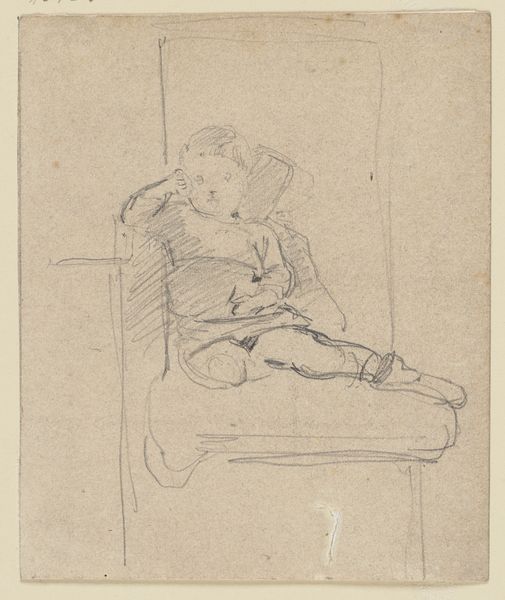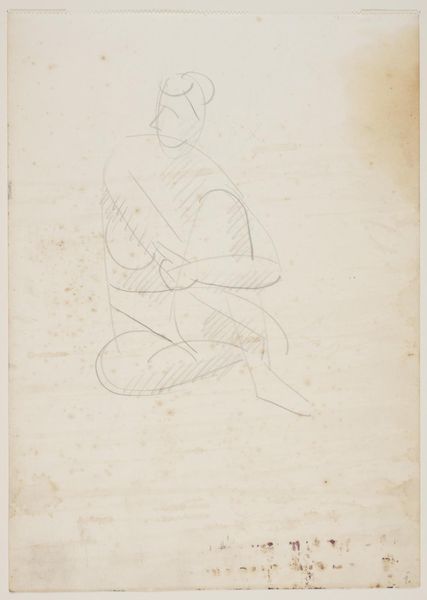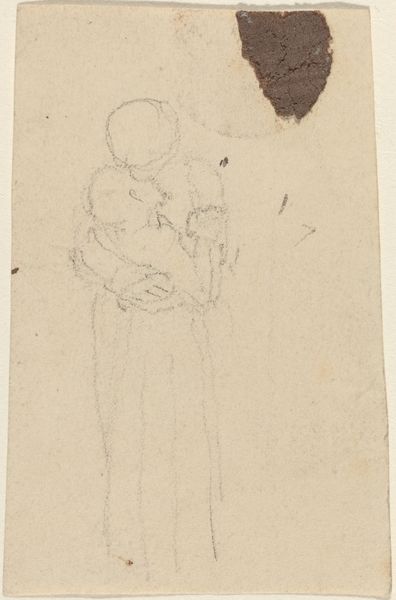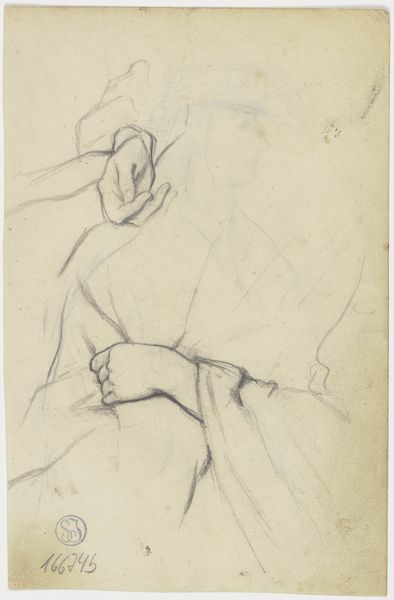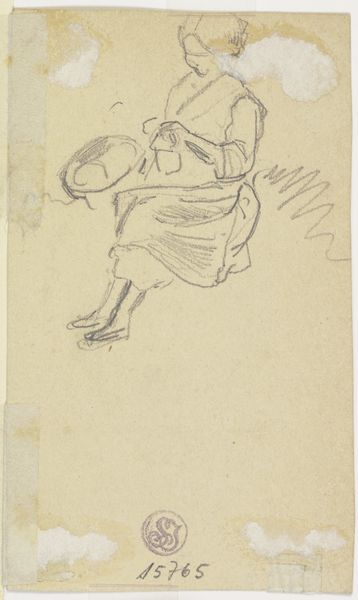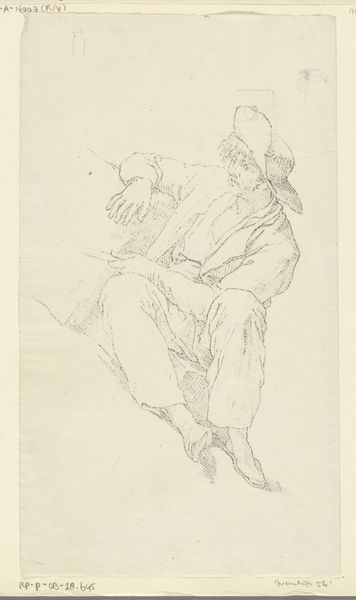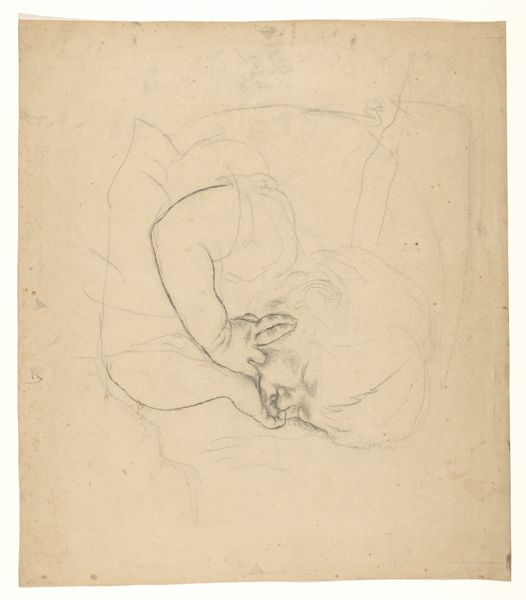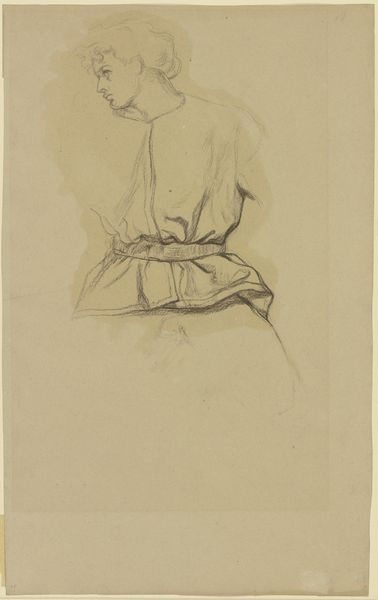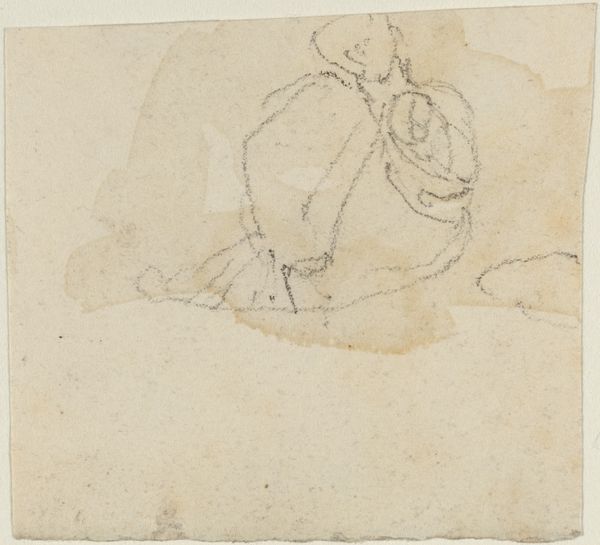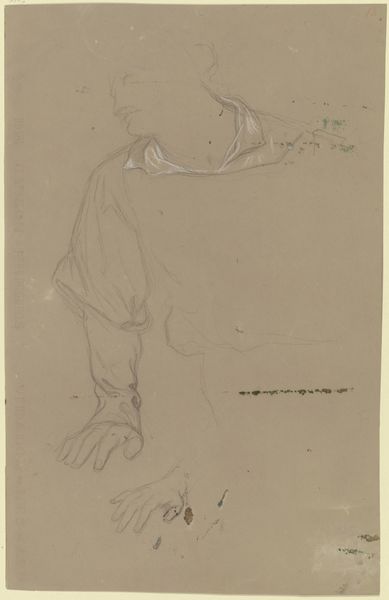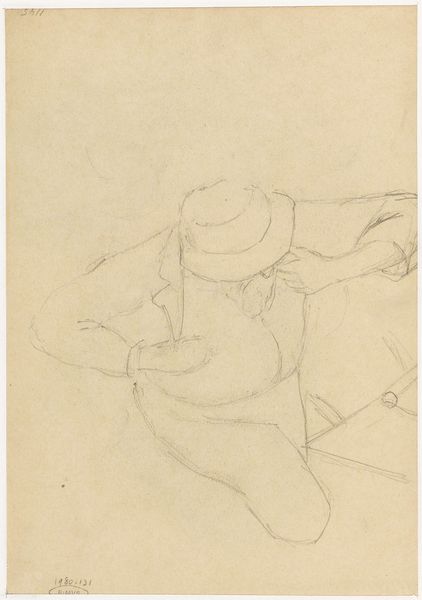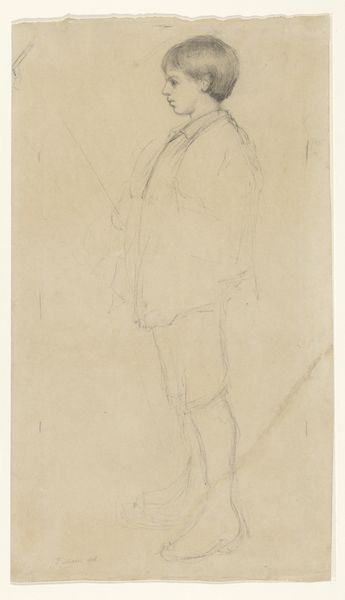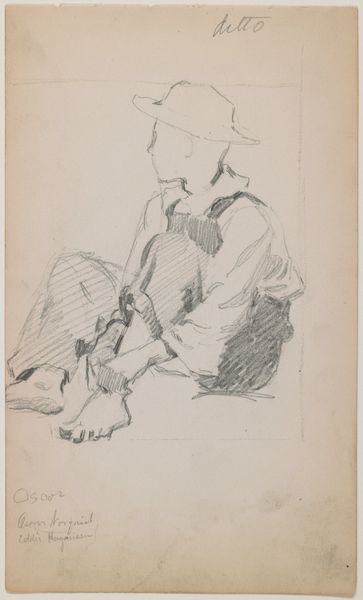
drawing, pencil
#
portrait
#
drawing
#
neoclacissism
#
aged paper
#
toned paper
#
light pencil work
#
pencil sketch
#
personal sketchbook
#
ink drawing experimentation
#
pen-ink sketch
#
pencil
#
sketchbook drawing
#
watercolour illustration
#
genre-painting
#
sketchbook art
Dimensions: height 177 mm, width 129 mm
Copyright: Rijks Museum: Open Domain
Editor: Here we have "Ineengedoken zittende, slapende soldaat"–"Huddled Seated, Sleeping Soldier"–a pencil drawing by Dionys van Nijmegen from the late 18th century. The soldier's posture is so dejected, his head in his hands... what’s your interpretation of this intimate sketch? Curator: It's fascinating to consider this work within its historical context. Neoclassicism often idealized heroism, but here, we see the vulnerable aftermath of conflict. This drawing complicates those heroic narratives by revealing the psychological toll war takes on the individual. It is critical to consider the socio-political forces that shape the representation of war, namely how, where and for whom. How does the artist confront issues of identity? Editor: I hadn't thought about it in those terms. The vulnerability is definitely emphasized by the medium itself, it seems very personal, like a page from a sketchbook. Curator: Precisely. It's a raw, unvarnished portrayal, distant from history painting’s agenda. What about the soldier's uniform, if we can even call it that? Does the sketch depict status and authority, or something very different? Editor: Good point. He is kind of disheveled. Not the image of military might we’re used to seeing in neoclassical art, more about humanity… I suppose in this case a weary and troubled one. Curator: Exactly! This sketch disrupts the dominant narrative. The drawing acts as a testament to the soldier’s experience. Is the artist making a broader comment about power or the impact of the Dutch Republic on its citizens? Editor: I see now that by stripping away the grandiosity, van Nijmegen directs our attention to the very human cost of conflict and duty. I am really moved by how powerful that is. Curator: This allows us to reflect on the function of art, encouraging dialogue between art and contemporary theory.
Comments
No comments
Be the first to comment and join the conversation on the ultimate creative platform.
